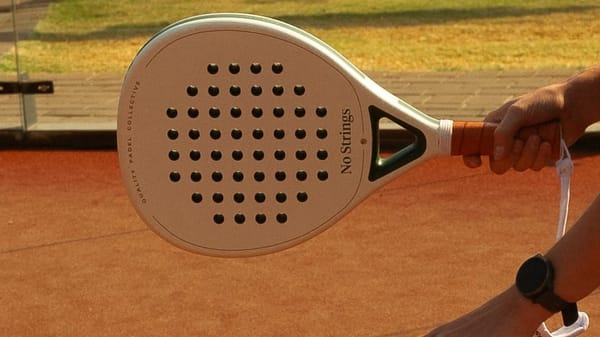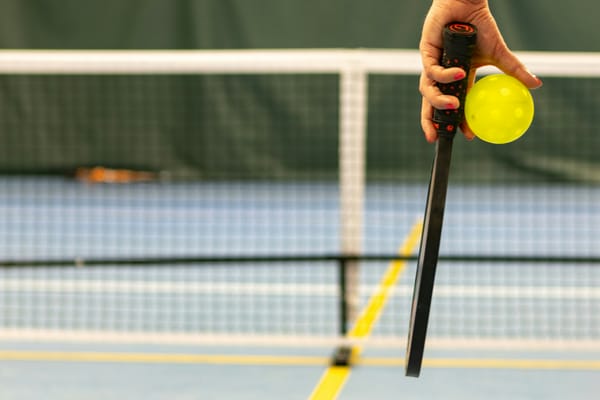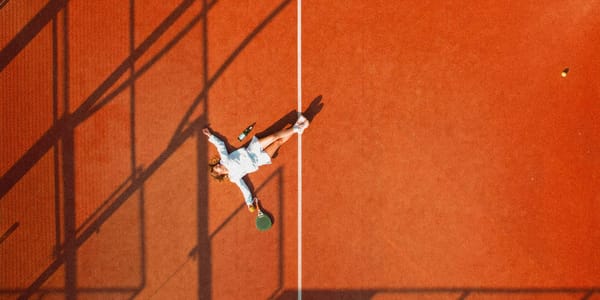Padel injuries: The most commons ones and how to avoid them
Learn how to prevent the most common padel injuries with simple tips to keep you playing pain-free. From ankle sprains to tennis elbow, here’s what to know before your next match.

Padel is fast. It’s fun. It’s competitive. And sometimes, it leaves you limping.
Whether it’s a rolled ankle, a sore elbow, or a stiff back, most padel injuries are easy to spot and even easier to prevent. The trick is knowing what to watch out for and how to stay on court without getting sidelined.
Here’s a no-nonsense guide to the most common padel injuries, why they happen, and how to avoid them.
1/ Sprained Ankles
Why it happens
All those quick lateral moves, sudden stops, and sharp pivots can take a toll on your ankles. If your footwear isn’t up to scratch or you land awkwardly, your ankle can twist and buckle. It’s no surprise that sprained ankles are the most common padel injury among club players.
How to avoid it
Wear proper padel shoes with solid lateral support. Regular running shoes won’t cut it. Warm up before every match with ankle circles, light jogging, and lateral shuffles. Clear any stray balls off the court so you don’t accidentally step on one. If your ankles feel wobbly, work on balance drills to build up your stability.
2/ Tennis Elbow
Why it happens
Despite the name, tennis elbow is common in padel too. It’s that pain on the outside of your elbow that flares up after your forearm muscles have been overworked. The usual culprits are poor technique, overuse, or gripping the racket with too much force.
How to avoid it
Loosen your grip and use your whole body for power rather than just your wrist. Make sure your racket has good vibration dampening and isn’t too heavy. Warm up your arm before playing and strengthen your forearm with some light resistance exercises off the court. If you start feeling that telltale twinge in your elbow, give it a rest before it gets worse.
3/ Shoulder Strain
Why it happens
Smashes, bandejas, and other overhead shots put serious stress on your shoulder, especially the rotator cuff. If your form is off or your shoulder muscles are weak, that strain adds up quickly and can lead to pain or injury.
How to avoid it
Begin each session with shoulder mobility drills or some resistance-band warmups. Use your legs and core to power your smashes instead of letting your shoulder do all the work. Strengthen your upper back and shoulder muscles between sessions and stretch them out regularly to stay flexible.
4/ Knee Pain
Why it happens
Explosive sprints, sudden changes in direction, and low defensive shots all put a beating on your knees. If your leg muscles like your quads and glutes are weak or you land awkwardly from a jump, you raise the risk of patellar strains or even ligament injuries.
How to avoid it
Build strength in your lower body with squats, lunges, and glute exercises. Focus on landing softly and pivoting on your feet instead of twisting your knees under stress. Wear court shoes with good cushioning to absorb impact and consider using knee sleeves for extra support. If your knees start to ache, ease up and do not try to power through the pain.
5/ Lower Back Strain
Why it happens
Padel makes you twist, bend, and lunge constantly. Without a strong core or flexible hamstrings, your lower back ends up picking up the slack and paying the price.
How to avoid it
Work on your core strength with planks, bridges, and rotational exercises. Keep your hamstrings and lower back loose by stretching them after every session. When you bend to pick up balls, squat with your knees instead of hinging over from your back. Avoid over-arching during smashes. If your lower back starts feeling tight, stop and stretch it out before you continue playing.
Final Serve
Injuries happen but most of them don’t have to. With the right warm-up, solid technique, and a bit of off-court prep, you can cut down the risk and keep playing at your best. Don’t wait until you’re hurt to make changes.
See you on the court.
Cheers for now.





